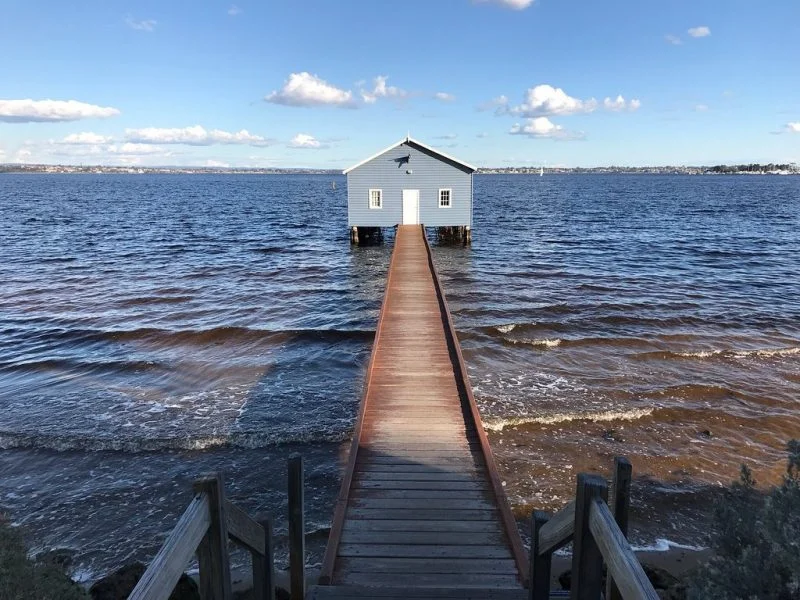#723 Appraising the Anthropocene
Three books reviewed by Graeme Wynn:
The Anthropocene Disruption
by Robert William Sandford
Victoria: Rocky Mountain Books, 2019
$20.00 / 9781771603195
Anthropocene
by Edward Burtynsky, Jennifer Baichwal, and Nicholas de Pencier; and co-edited by Sophie Hackett, Andrea Kunard, and Urs Stahel
Fredericton and Toronto: Goose Lane Editions and Art Gallery of Ontario, 2018
$35.00 / 9781773100975
Changing Tides: An Ecologist’s Journey to Make Peace with the Anthropocene
by Alejandro Frid
Gabriola: New Society, 2019
$19.99 / 9780865719095
*
On March 12, 2020, Changing Tides: An Ecologist’s Journey to Make Peace with the Anthropocene, by Alejandro Frid, was one of five books shortlisted for the 2020 Hubert Evans Non-fiction Prize of the BC and Yukon Book Prizes. Winners will be announced on September 19th – Ed.
*
The Anthropocene. We live in it. We hear about it. We worry about it. But what, exactly, is it? Baby boomers, Gen Xers and older Millennials may recognize it (or at least the word for it) as a relatively recent coinage. By common account “The Anthropocene” became a thing 20 years ago, when the Nobel Prize winning atmospheric chemist Paul Crutzen coined the term at a meeting of the International Geosphere-Biosphere Programme to recognize the accelerating impact of human activities on earth system processes. Two decades on, it is impossible to survey, never mind digest, the various ways in which the Anthropocene idea has been invoked. It is quite evidently a shape- (or meaning-) shifting will-o-the-wisp. Typing the word into a Google search on the first day of 2020 yielded “about 5,640,000 results.” Among them were countless article and blog entries, novels, movies, YouTube videos, and TED talks. A more focused Google search, for “Books with Anthropocene in the title,” returned over 400,000 hits.
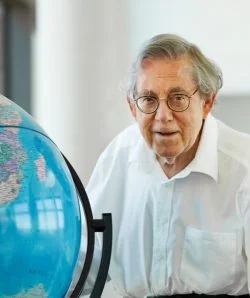
Precisely what these numbers, and others like them, mean remains opaque. A year ago, a keyword search for “anthropocene” in the US Library of Congress catalogue returned fewer than 500 entries; today it tops 600. Yet a 2020 query of the same source for titles that included the word “anthropocene” yielded only 61 items. WorldCat, by contrast, gives us over 2500 anthropocene books, a tally that includes 173 dissertations and a certain amount of double (and triple) counting. This source also reveals the quickening pace of interest in the topic. Fewer than 15 books on the Anthropocene appeared in each of the years between 2000 and 2008. Between 2010 and 2013 the number climbed from 20 to 88; then it all but doubled, to 171 in 2014. The frenzy had begun. In 2015 there were 289 new works, then 390, then 496, and, in 2018, a total of 556. Perhaps the bloom is beginning to leave the rose; the 2019 count was a mere 497 books. But on 5 January, WorldCat was already signalling knowledge of 85 books with 2020 copyright imprints focused on the Anthropocene.
Even the most cursory of engagements with “the Anthropocene literature” reveals astonishing variety – and no small degree of contention. Titles in the Library of Congress booklist couple the word “Anthropocene” with the following: allegories; politics; poetics; economics, arts programming; geomorphology, environmental security; utopia, health, film, wildlife, children, cosmologies, urgency, freedom, Herodotus, and hope and grief. Others shadow, characterize, search for, welcome to, and chart transdisciplinary journeys in, the Anthropocene. A couple of authors explore the Anthropocene in Amazonia and North America, and a couple more would help us to face, and then to learn to die in, this new epoch.

Cracks are perhaps inevitable in so broad a picture window. We don’t need to dig very deep among Google’s five million hits to discover rich veins of doubt about and critique of the Anthropocene. An 11 March 2019 article in The Conversation argued that the “Anthropocene doesn’t exist and species of the future will not recognise it.” Five months later, Peter Brannen, writing in The Atlantic ( 13 August 2019) announced that “the Anthropocene Is a Joke.” One of the almost 500 books that used the word in its title in 2017 was T.J. Demos, Against the Anthropocene (Berlin: Sternberg Press, 2017), which argued that “the Anthropocene terminology works ideologically in support of a neoliberal financialization of nature, anthropocentric political economy, and endorsement of geoengineering as the preferred — but likely disastrous — method of approaching climate change” (blurb).

There are large stakes, strongly held opinions, and deep disciplinary divides in play here. Many people find the idea of the Anthropocene useful (albeit for different reasons), think of it in terms that fit their purposes, and develop more or less compelling stories to justify their interests. Others, like Demos, are suspicious of the undercurrents, the often overlooked, if not always explicitly hidden, implications of at least some of those stories. And some are simply resistant to facts and arguments that challenge taken-for-granted assumptions and the status quo. Although they speak in widely different tongues and tones, let us impose some semblance of order on the cacophony and bundle the various voices being aired here into three groups: proponents, sceptics and deniers.
Most proponents hold tightly circumscribed definitions of the Anthropocene. Those who think of it (as Crutzen challenged his colleagues to do) as a new geological epoch have sought evidence to support the story that recent changes in human use of the earth have been sufficiently dramatic to leave a mark in the stratigraphic record. Collectively they remain uncertain about the date when the Anthropocene began and the best markers of its existence. Does it reach back half a millennium to the beginnings of European expansion overseas and the great deforestation that followed, signalled by gradual increases in CO2 concentrations in the atmosphere? Should it begin with the sustained increase in fossil fuel (coal) consumption that drove the (British) industrial revolution of the late eighteenth century and set the pattern of economic development for the next two and a half centuries? Might the harnessing of nuclear energy (in the bombs dropped on Hiroshima and Nagasaki), and the great acceleration in consumption of fossil fuels and other resources that underpinned the age of mass consumption after 1945 be a better starting point, reflected by the radically new presence of radioactive isotopes, plastics, and chicken bones in the geological record? [1] Ultimately, however, this pro-Anthropocene story turns on physical evidence that charts a series of consequential changes in global (earth) systems. Whether or not the International Commission on Stratigraphy (that is charged with the task of defining the fundamental bases for the identification of new geological epochs), gives its imprimatur to the Anthropocene as a distinct geological entity, there is no question that the last fifty years have seen more rapid and extensive changes in planetary ecosystems than any half-century in human history. From an earth systems science perspective the Anthropocene is a robust idea.
Scepticism about the term “Anthropocene” comes, for the most part, from the humanities and social sciences, where many scholars (alert to the power that names have to channel thought) regard the term with suspicion, and others disparage and dismiss it. Their misgivings are too numerous and too varied to inventory completely. Many take issue with the first part of the word, “anthropo” derived from anthropos, Greek for human. They find dangerous hubris in the implication that humankind has so changed the world; as Peter Brannen wrote in The Atlantic, we inflate our “importance by promising eternal geological life to our creations.” Others insist that by attributing responsibility for the current state of the globe to humans, the term Anthropocene trades in Cartesian dualisms and reinforces the centuries-old divide between “humans” and “Nature.” This is the devil’s work, because that binary has been “fundamental to colonial rule, environmental change and genocide ever since Columbus landed on Hispaniola.” It has been indispensable to the destructive march of capitalism and colonialism across the globe.[2]

Others say that the term Anthropocene further misleads by making all humans responsible for the planet’s current bio-ecological crisis. They point out that the Anthropocene is not a “species act,” the result of some inherent human trait. Our plight has its roots in liberal ideology and has been brought to its current expression by the machinations of liberalism’s close cousin, capital – not by humanity. We should speak truth to power and recognize, according to Jason Moore, that we live in the Capitalocene. Geographer Eric Swyngedouw, similarly believes it wrong to hold all humans responsible for despoliation of the earth when most damage has been caused by a small minority; he suggests that the present epoch might be more accurately named the Oliganthropocene, as a form of censure visited on the oligarchs who have plundered the wealth of the world. Carrying these concerns a step further, Swyngedouw also coined the term Anthropo-obScene to attest to and undermine the depoliticizing quality of Anthropocene stories. Anna Tsing and other scholars in the environmental humanities have favoured the term Plantationocene to draw attention to the parallels between current circumstances and the exploitative, ecologically damaging, racially oppressive, people- / plant-/ and animal-discipling systems of production developed on early modern plantations and incorporated into the factory system.
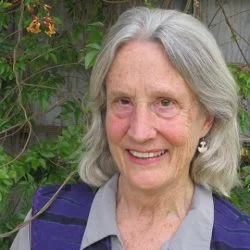
Yet more recently, ecofeminist theorist Donna Haraway has questioned the very idea of an Anthropocene epoch, preferring to see the Anthropocene as a boundary event, marking severe discontinuities, rather than a new and extended time period. In this view, human and nonhuman are now so inextricably entangled that we live in a world of “myriad temporalities and spatialities and myriad intra-active entities-in- assemblages — including the more-than-human, other-than-human, inhuman, and human-as-humus,” a conjuncture that Haraway would call the Chthulucene. Anticipating a future quite unlike the past, she stresses the need to move, as quickly as possible, beyond the disjunctions and discontinuities of the Anthropocene to shape a future in which the cultural and biological diversity of “people and other critters,” might be replenished, alongside the cultivation of an enduring, mutual, obligatory and inclusive sense of kin-ship, and thus responsibility, across generations and species.[3]
*
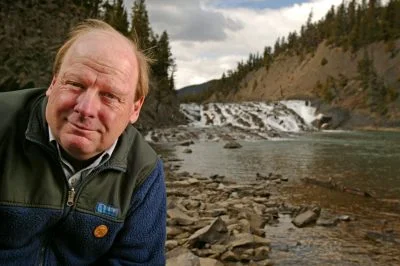
How, then, might the three books sent me by the editor of The Ormsby Review, packaged together because they all have Anthropocene in their titles, contribute to these debates, improve understanding of the complexities of the Anthropocene, and help us to move forward. They form an odd — but perhaps also oddly representative — troika. The first, The Anthropocene Disruption by R.W. (Bob) Sandford — a much published author recognized according to his website as “The Winston Churchill of Water,” and sometime senior policy advisor for the Adaptation to Climate Change team at Simon Fraser University — is a small format volume of 150 pages published by Rocky Mountain Books. The title page of the second, reads simply Anthropocene with three names, in caps, immediately beneath: “Burtynsky Baichwal de Pencier.” This is, literally, a much weightier production than Sandford’s, with 250 pages of high-quality stock, each of them about twice the size of those in the RMB Manifesto. The book is part of a larger project, co-sponsored by the National Gallery of Canada, the Art Gallery of Ontario, and the Fondazione MAST in Bologna (as well as other partners, agencies and donors), undertaken by the artists and filmmakers Edward [B] , Jennifer [B], and Nicholas [de P]. Changing Tides, by Alejandro Frid, a Mexican-born graduate of Evergreen State College, UBC, and Simon Fraser University (PhD 2006), charts, as its subtitle indicates, an ecologist’s journey to make peace with the Anthropocene. Released by New Society Publishers of Gabriola Island, the book reflects its author’s scientific training, and his work as science coordinator for the BC Central Coast Indigenous Resource Alliance, as well as his identity as a BC resident and parent, in its effort to shape a better future by merging science and Indigenous knowledge. All have some value, but each also has its flaws.
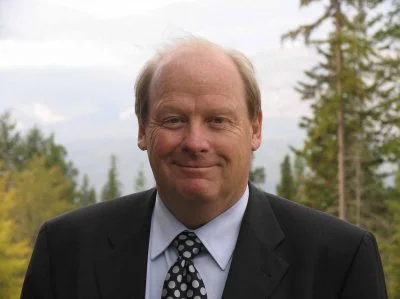
Given the vast recent outpouring of literature on the Anthropocene, and Sandford’s career-long preoccupation with water issues, I wondered what his slim book might offer in the way of new understanding. But Sandford has (his United Nations University webpage tells us), spent forty-five years interpreting natural and human history for general audiences, and the last twenty “translating scientific research outcomes into language the average person can understand.” After tracking through the contested thickets of debate about conceptualizing and naming the Anthropocene, this was promise enough on which to proceed.
Because my current leisure reading is focused on librarian Christopher de Hamel’s encounters with remarkable illuminated manuscripts, I incline to think of The Anthropocene Disruption as a Breviary for inhabitants of the Anthropocene. Just as early members of the Franciscan order needed an abridged version of the many books used to perform the canonical Office in medieval Benedictine and Cistercian monasteries as they went about their business as an active, missionary, preaching order, so “today’s average person” might benefit from Sandford’s little volume. After an enigmatic opening, it furnishes the basics, without pretending to be the last word on the topic. Readers new to the subject will find here useful, brief, and broadly uncontroversial or sanitized, accounts of how the term Anthropocene came to be, the stratigraphic justification for it, and the evolution of the concept. In explaining why the Anthropocene is seen as a rupture, Sandford stays close to the science (as is true through most of the book), eschewing engagement with the ideas of Anna Tsing, Donna Haraway and others (which he sees as distracting from the task at hand, see pp. 56-7).
Making the argument that strong voices are needed to bring about the sorts of deep adaptations required to avert disaster, Sandford becomes more forceful. Somewhat unusually, he tracks the tribulations of a British business school professor — whose paper questioning the idea of sustainable business, and the value of business schools as they now exist — was rejected by a journal editor, to argue that “academics are being prevented from warning the world” about the unsolvable predicament we face (p. 81) . The situation is dire. Scientists cautiously respectful of the limits of inference and evidence are up against powerful fossil fuel interest who have the ears of politicians; they are “taking poisoned chocolates to a knife fight” (p. 87).

Seeking wisdom in an age of climate crisis (and thus tending to reduce the broader set of chemical, physical, and biological changes signalled by the earth systems science view of the Anthropocene, to that crisis) Sandford turns to British Columbia’s Robert Bringhurst and Jan Zwicky, who use the opening phrase of this paragraph in the title of their remarkable meditation, Learning to Die (University of Regina Press, 2018). After detailing at some length his long-standing admiration for Bringhurst’s writing about Haida Gwaii and his interpretation of Bill Reid’s Black Canoe, Sandford notes en passant that the marriage of Indigenous sensibility and technology may be the only way “to save our earth boat and the oceans on which we all float.” He also reports, without substantial comment, Bringhurst’s entreaty in the 2018 book, to think like an ecosystem, rather than as a “spoiled brat or biological singularity.” Then he offers a précis of Zwicky’s fine essay outlining the relevance of Socratic virtues in dealing with environmental crisis. But the effective conclusion of this discussion – “while the Socratic virtues may not be a guide for everyone, they remain undeniably valid in our time. But so too are the virtues of hope and humour” (p. 127) – seems impotently limp.
In the end, The Anthropocene Disruption barely justified the faith I invested in it on account of Sandford’s reputation. As a somewhat eclectic review of surprisingly diverse literatures, it stands as a digest of the work of others, leavened here and there by Sandford’s often quirkily-expressed opinions. It pushes few intellectual or interpretive envelopes, and to my mind at least, is disappointing for the way in which it raises interesting questions and then fails to pursue them. Even the ten-page appendix, which poses a dozen “Questions about the Anthropocene disruption” characteristically refuses to answer them. The fullest of these responses — to the question “Are Social Scientists muddying the waters?” — surprisingly focuses on E.O. Wilson’s critique of remarks by the environmental scientist Erle Ellis (who has a PhD in Plant Biology), that ended with Wilson claiming that “leading proponents of the Anthropocene are as free of facts as they are of fear.” But that’s the thing about breviaries I suppose: they helped to spread a version of the gospel and were not meant for close analysis, challenge, and criticism.
*
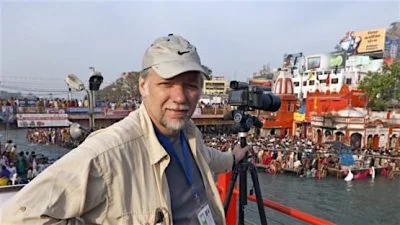
Burtinsky, Baichwal and de Pencier offer an entirely different take on the Anthropocene, and their book, built around an array of striking photographs, raises questions radically dissimilar to those provoked by Sandford (and Frid, as we will see). Anthropocene includes several intimations of what that term means, but these are brief gestures toward the meaning of an idea taken as understood. Blocks of text accompanying individual photographs or sets of images provide basic factual information. So we learn, before encountering five pages of images of the Carrara quarries and carving studio, that 18 percent of the world’s marble comes from Italy, that these quarries have been worked continuously since Roman times and still hold vast reserves, and that the quarries form a “negative” architectural trace upon the planet that is visible from space. So the text accompanying three astonishingly colourful images, taken in the many thousands of kilometres of dark tunnels through the potash hundreds of metres below the ground near Berezniki in Russia, informs us that sinkholes have undermined parts of the city and that “anthroturbation” (large-scale human tunneling under the earth) will “leave behind a record of our presence” (p. 142). Reviewing these pages, I am led to contemplate many things, including powerful images of human despoliation of the earth, the challenges involved in making sense of the world, the visual enthrallment of our society, and our contemporary fascination with “fame.” Where such contemplation leads and leaves us, as individuals and citizens of the Anthropocene, I am far from certain.

The changes in global ecosystems broadly signified as the Anthropocene are complicated, and pitfalls confront all who spring blithely into discussion of them. Because arguments depend on evidence for their credibility, however, it is important to get things right (and to correct the record when mistakes are made). In this vein, I draw attention to a couple of howlers in this text. According to Sophie Hackett from the Art Gallery of Ontario, the idea for the Anthropocene project came from Jennifer Baichwal in 2014, after she saw Burtynsky’s images of the Colorado River delta (p. 13). These showed “the fingers of its tributaries emerg[ing] from the soil, reaching for a river that was no longer there” because its waters had been diverted for irrigation. A reproduction of one of these images seems to reveal this egregious appropriation in a striking filigree of branch-like tentacles. But, BUT, this is a delta. These are distributaries. Far from “searching” for the river, they run away from what remains of it, carrying its finest sediments for deposition at the delta edge.


By the same token, it is perhaps gratifying to readers on Canada’s west coast to learn that Burtynsky regards his photographs of Douglas-fir, Western Hemlock, and Western Red Cedar in Cathedral Grove and other areas of Vancouver Island as images of “some of the most verdant and transcendentally beautiful places I have ever seen” — but more than a little disconcerting to find these same places described as “the ancient remaining redwood stands of British Columbia” (p. 192).
There is no doubt about Burtynsky’s success as a photographer of “large scale systems that leave lasting marks” on the earth. His images of industrial landscapes — of massive industrial plants, of extraction in the Canadian tar sands, of the nickel tailings of Sudbury, of the remnant and newly-established zones of Chinese industrialization — hang in more than sixty major museums and are widely circulated in books. Many of them were made from elevated vantage points, the better to take in the wider spectacle. This pattern is continued (though not used exclusively) here, often aided and extended by new technologies: drones, satellites, digital cameras. Defining the Anthropocene (p. 190) as “the indelible marks left by humankind on the geological face of our planet” (whatever that means), Burtynsky (and his collaborators) produce a stunning array of images.


Contributors to this volume — who include several essayists in addition to the three image-makers — have gone about their work thoughtfully, and all of it must be seen as part of a larger endeavour, “The Anthropocene Project” (emphasis added). This includes exhibitions at the three sponsoring galleries (that include Augmented Reality installations, partly represented by still images in the book), a website, and a film (with scenes from 43 locations in 20 countries), titled Anthropocene: the Human Epoch.[4] Reflecting on their efforts, contributors offer a number of clues about what they hope the book might achieve. Its images are intended (in de Pencier’s telling) to encourage viewers to “step out of the bubble of frenetic modern existence and contemplate human activity on a planetary scale and in geological time” (p. 207). Baichwal sees them as acts of witnessing (p. 197); she does not want to “preach, harangue, or blame,” but to reveal to those who cannot see the evidence for themselves, “what it looks like for humans to be everywhere, affecting everything, all the time” (p. 202). Burtynsky says that he and his collaborators “believe that an experiential immersive engagement” with their work can make people aware of “the normally unseen result of civilization’s cumulative impact on the planet,” and shift peoples’ consciousnesses (p. 194). In her short essay on “The Art Museum and the Anthropocene,” Andrea Kunard, the Associate Curator of the Canadian Photography Institute in the National Gallery of Canada, more or less sums up all of this, when she writes that the Anthropocene positions the art museum as a space for discussion by “capitalizing on the power of aesthetics to hold the viewer in a place of reflection” (p. 221).
Much as I admire and am intrigued by many of the images in this book, I am uncertain what they will mean to viewers, how others will “read” them, and where the power of aesthetics will lead their reflections. In an age when tens of thousands of photographs of an otherwise unremarkable boatshed on the Swan River in Western Australia are posted on Instagram, and tourists (with no more reason to be there than the influence of “influencers”) crowd the nearby sidewalk to capture a selfie with the now iconic structure, I wonder how much reflection images provoke these days.[5] “Reflection” is also shaped (perhaps determined) by experience, knowledge, prior conviction.

Recognizing that most of Burtynsky’s images are arresting and hauntingly beautiful, I wonder if the book offers enough for many viewers to understand what they are looking at. Might they simply marvel at the beauty of the swirling colours of the leached heavy metals in the tailings ponds of Arizona copper smelters. Or, possibly, take from the capsule “explanation” that accompanies them the “good” news that efficient operations have reduced their water demands by almost 90 percent by recycling. Believing in the power of words, I hanker for more pointed context, more explanation of the implications of what I am looking at, and clearer connections between sets of photographs. Worrying about the capacity (especially of those whose understanding of the environmental sciences and human history is thin) to pull these pieces together, I crave accounts of how the scenes portrayed came to be. To my mind, the book needs more elucidation of why its images matter, and how viewers might better understand them. If artistic production is a singular talent, and beauty (and interpretation) are in the eye of the beholder, where is the there there? An environmental historian viewing a spectacular photograph of a massive dam and hydroelectricity generating station (of which incidentally there are none in this book) might lament the conversion of a once free-running river into an organic machine.[6] But someone unfamiliar with Richard White’s characterization of the Columbia River in these terms might just as readily see the image (and the dam) as a testament to human ingenuity, engineering skill, and economic progress, or simply admire the water falling through the spillway. As I lift my gaze from the dazzling assortment of Anthropocene images, I wonder, darkly, whether the Anthropocene is on its way to becoming a spectacle — or even (perish the thought) a celebrity of the blue boat shed sort — albeit one possessed of a somewhat shady reputation. #myanthropocene, anyone?
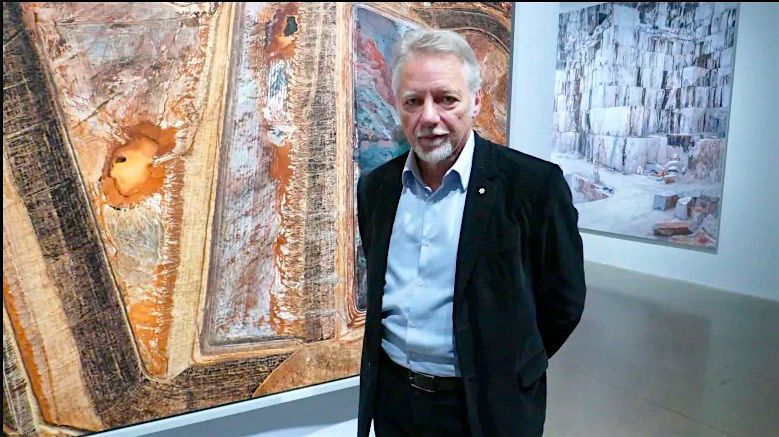
*
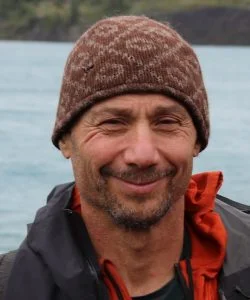
Alejandro Frid’s Changing Tides is a deeply personal reflection on his experience standing, as he puts it, “at the crossroads of history, culture, ecology, and social justice” (p. 28). He descends, he tells us, from Jewish people who left the Middle East centuries ago, and scattered across several Eastern Europe and Mediterranean countries. Shortly before the holocaust, some of his ancestors found sanctuary in Mexico. After a couple of generations there, his immediate family moved on again, this time to Canada. Through his graduate education he became a scientist, an ecologist and an expert on the interactions between marine predators and their prey. Now resident on Bowen Island, and employed by the Wuikinuv, Kitasoo/Xai’xais, Nuxalk, and Heiltsuk Nations “to collaborate with them in the integration of traditional and scientific ways of knowing and to apply the results to the conservation and management of marine ecosystems,” he clearly loves the natural world (p. 30). There he has found inspiration and solace, but he is also haunted by the environmental destruction of the Anthropocene. Twice arrested for civil disobedience during protests against fossil fuel companies, he was shaken from despondency about the fate of the Earth by the challenge of bringing a child into a benighted planet. His first book A World for My Daughter (Halfmoon Bay: Caitlin Press, 2015) sought hope in the gloom, and Changing Tides continues this quest.
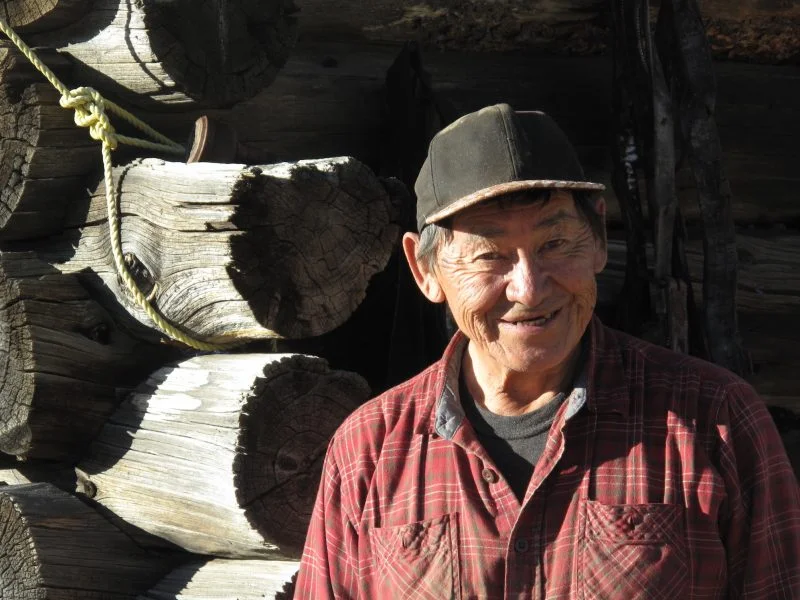
Frid believes, passionately and on the basis of his work with coastal First Nations, that Indigenous peoples have long understood and practiced many of the behaviours required to save our threatened world. He is not alone in this. David Suzuki, for one, has argued that “we [newcomer/ settler Canadians] have got to indigenize ourselves” (and see Sandford above).[7] But Frid brings new perspectives to bear on this claim and offers important, clear, and compelling arguments for his case to be taken seriously. This makes his book one of the more worthy additions to the fast expanding library of Anthropocene titles — the more so because Frid’s personal style and clear (even occasionally poetic) prose carries readers through discussions of the relevant science as easily as it transports them through remote landscapes and beneath the waves.
The wanderings of his ancestors, Frid observes disarmingly, mean that he is “the antithesis of Indigenous.” Yet he finds himself thinking constantly “about the parallels between ecological resilience and Indigenous cultural resilience,” spurred by intellectual curiosity and the desire to ensure “his daughter’s generation a better world” (p. 19). In a nutshell, he argues that the stories we citizens of the second and third decades of the twenty-first century “decide to ditch or accept into our collective identity” will determine whether this desire is realized, or not (p. 11).
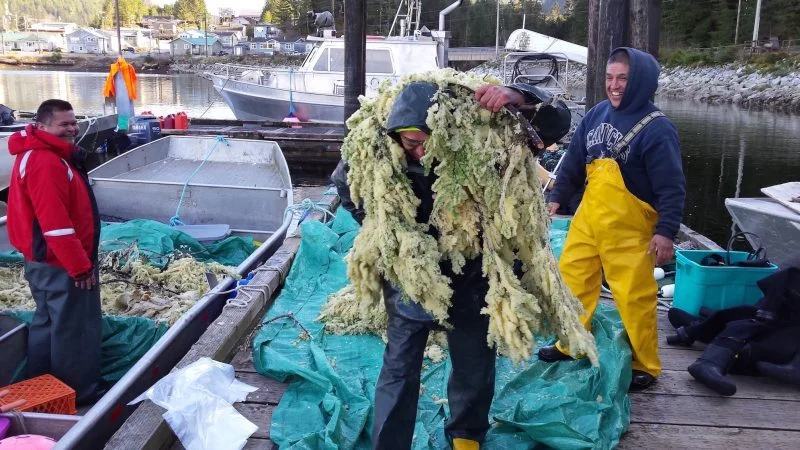

For too long, most of us in the so-called “developed” world have subscribed to the convenient but ultimately damaging fictions that growth is imperative, that greed is good, and that we cannot help ourselves (there are echoes of Jason Moore’s Capitalocene argument here, although Frid eschews such formulations). But this is wrong. Following ecologist Fikret Berkes and ethnobotanist Nancy Turner, Frid insists that “there is no fixed human nature.” People are “not destined to be climate-altering, species-annihilating, self-destruction machines. Rather we are destined to be the story that we tell ourselves of who we are” (p. 143). Changing Tides insists that the long history of First Nations settlement on the British Columbia coast demonstrates the accuracy of the first part of this proposition, and then contends that we need to reinterpret ourselves (to find another way of being on the Earth). The final words of Changing Tides are: “We are on a knife-edge and this is the time to act.”
Stories, Frid tells us, are like topographic maps that represent vast corrugated landscapes in two dimensions or equations that map the universe — they are all metaphors that give meaning to our lives. Central to the stories of all First Nations is the conviction (summarized by Frid by reference to Heiltsuk customary laws known as Gvi’ilas) that they “have been present in traditional territory since time began and will be present until time ends.” From this recognition a “cascade of commitments and responsibilities” flows, making it “the most powerful conservation tool imaginable.” This “so long as the rivers run” story is widely familiar, as are the corollary claims about its implications. But it has always been open to the sceptical challenge that Indigenous economies and cultures survived for millennia not because the people chose to conserve, but because their numbers, and their technologies constrained their need and capacity to destroy. The fundamental question, as Frid frames it, is whether “semi-continuous and long-term occupation [is] a pre-meditated achievement or blind luck?” (p. 36).
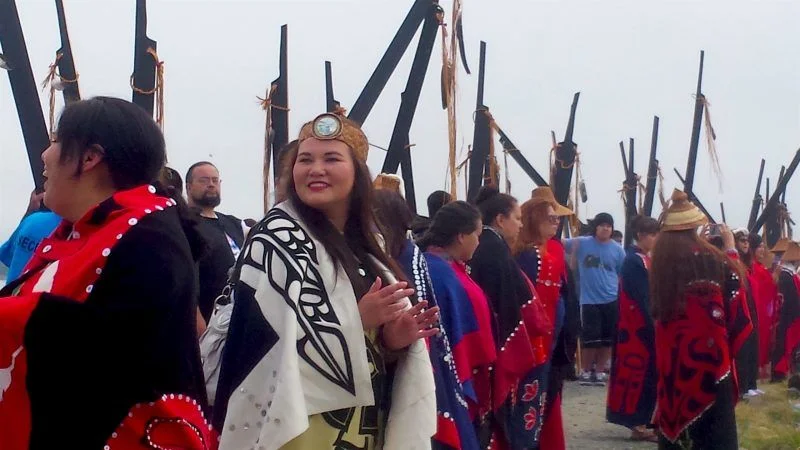
To address this question Frid turns to his scholarly training and his deep knowledge of the marine resources of the west coast. Having spent the early part of his career expanding and testing “optimal foraging theory” and “central place foraging” theory (which “interprets how animals that return regularly to a ‘central place’ [such as a nest] decide where to feed and how much time and effort to spend feeding at a resource patch”), he reviews the evidence from fishbones accumulated in middens over the centuries to conclude that Indigenous groups on the West Coast were intentional conservationists rather than optimal foragers (pp. 144-7). Especially in taking rockfish, an easily depleted species, they fished selectively to avoid scarcity near their settlements. Frid is careful not to claim that Indigenous people never acted as optimal foragers. But he honours their capacity to learn from experience, modify their behaviours, and pass on knowledge. This, he further notes, is where connection to place (“we have been here since time began”) is key. Footloose foragers, people unattached to place, will always tend to optimize “because what they leave behind or what they do not is someone else’s problem. When scarcity strikes they simply move on and will continue to do so until biological annihilation is a fait accompli for the whole planet” (p. 146).
Ultimately, then, the question upon which our collective future depends becomes “how do we become part of the land on which we stand?” We [settler colonists] cannot become Indigenous. But we need not be “roving bandits” or aggressive invasive species. It is time to change the story. The coastal First Nations with whom Frid works have “ancient and sophisticated legal systems that outline human responsibilities towards human and non-human kin” (cf Haraway, above). By being more mindful of these commitments, by shifting the metanarrative of modern human settlement from conquest, invasion, domination, and destruction toward a more gentle, inclusive vision of shared lives inherent to place, lived with an eye to need rather than desire, and to what we leave behind rather than on what we can take and accumulate, we can make a difference (pp. 23-25). We settlers of Indigenous territory would do well to borrow Robin Wall Kimmerer’s insight from Braiding Sweetgrass (as Frid does) and make the plantain — an introduced species that offered benefit to Indigenous people — rather than the endlessly aggressive kudzu and loosestrife, our emblem.[8] Respect, gratitude, and reciprocity towards all living things are at the very core of the aforementioned Indigenous codes (or stories). These are words to think with, and ideas to live by, as we appraise the Anthropocene — and decide the future.

*

Graeme Wynn is Professor Emeritus of Geography at UBC. As an historical geographer and environmental historian, he served that institution in various capacities including Associate Dean of Arts, twice as Head of Geography and, for six years, as editor of BC Studies. A Fellow of the Royal Society of Canada, he served as President of the American Society for Environmental History (2017-2019) and he is Adjunct Professor (History) in the University of Canterbury, New Zealand. Wynn currently serves on the Advisory Board of The Ormsby Review, on the Advisory Board of UBC’s Green College, and as Vice-Principal of UBC’s Emeritus College. Much of his work has focused on Canada, although his interests extend more broadly to encompass much of the so-called British world. He edits the Nature|History|Society series published by UBC Press, and in 2019, under the On Point imprint of UBC Press, published a collection of essays, co-edited with Colin Coates, The Nature of Canada, reviewed for The Ormsby Review by Jenny Clayton. Editor’s note: a chapter by Graeme Wynn in The Nature of Canada, co-written with Jennifer Bonnell, was also published in The Ormsby Review.
*
Publisher and Editor: Richard Mackie
The Ormsby Review is a journal service for serious coverage of B.C. books and authors, hosted by Simon Fraser University. The Advisory Board consists of Jean Barman, Robin Fisher, Cole Harris, Wade Davis, Hugh Johnston, Patricia Roy, David Stouck, and Graeme Wynn. Scholarly Patron: SFU Graduate Liberal Studies. Honorary Patron: Yosef Wosk. Provincial Government Patron since September 2018: Creative BC
“Only connect.” – E.M. Forster
Endnotes:
[1] Carys Bennett, Jan Zalasiewicz, Mark Williams, Richard Thomas, “How chickens became the ultimate symbol of the Anthropocene,” The Coversation, December 12, 2018
[2] Jason W. Moore, “Confronting the Popular Anthropocene: Toward an Ecology of Hope,” New Geographies (a journal founded and produced by doctoral candidates at the Harvard University Graduate School of Design) 9, (2017), 186-91. For an extended review and commentary see Benjamin Kunkel, “The Capitalocene,” London Review of Books, 39, 5 (2 March 2017)
[3] Donna J. Haraway, “Anthropocene, Capitalocene, Plantationocene, Chthulucene: Making Kin,” Environmental Humanities, 6 (2015), 159-165 ; Donna J. Haraway, Staying with the Trouble: Making Kin in the Chthulucene (Durham, NC: Duke University Press, 2016)
[4] The Anthropocene Project at: https://theanthropocene.org
[5] Violetta Wilk, “How a humble Perth boathouse became Australia’s most unlikely tourist attraction,” The Conversation, June 20, 2019
[6] Richard White, Organic Machine (New York: Hill and Wang, 1995)
[7] David Suzuki and Graeme Wynn, “Has Environmentalism Failed?” Pp. 167-188 in Lev Bratishenko and Mirko Zardini, eds., It’s All Happening so Fast: A Counter-History of the Modern Canadian Environmental Movement (Montreal: Canadian Centre for Architecture, 2016), quote on 178
[8] Robin Wall Kimmerer, Braiding Sweetgrass: indigenous wisdom, scientific knowledge and the teachings of plants (Minneapolis, MN: Milkweed Editions, 2013)
